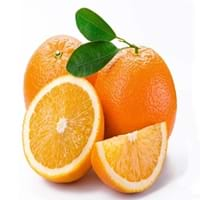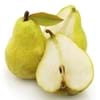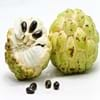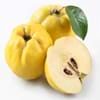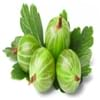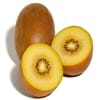Health Benefits
Arthritis prevention, Cancer prevention, Gout treatment, Heart care
Arthritis treatment, Cancer prevention, Increases metabolic rate, Kidney stone treatment, Lower blood pressure, Prevents constipation, Prevents diabetes, Strengthening of bones, Ulcer treatment, Weight loss properties
General Benefits
Anti-inflammatory properties, Boosts immune system, Controls blood pressure, Controls blood sugar levels, Cures fever, Digestive aid, Sore throat treatment
Boosts immune system, Controls blood pressure, Digestive aid, Improves eye vision, Maintains healthy cholesterol level
Skin Benefits
Reduces wrinkles, Treatment of acne
Anti-aging benefits, Brightens and lightens complexion, Hydrates skin, Skin rejuvenation, Treatment of acne, Treatment of dark spots
Hair Benefits
Promotes longer and healthier hair, Shiny hair
Good conditioner, Prevents hair loss, Regulates hair growth, Treatment of dandruff
Allergy Symptoms
Anaphylaxis, Digestive Problems, Itching, Skin Rashes, Swelling
Abdominal pains, Breathing difficulty, Coughing, Diarrhea, Drop in blood pressure, Fainting, Runny nose, Skin rash, Sneezing, Swelling of mouth, tongue or lips, Vomiting
Side Effects
Allergic reaction
Abdominal cramps, Diarrhoea, Weight gain
Best Time to Eat
As a snack in the late afternoon, Don't consume at night and before bed, Eat the fresh ones, avoid mixing with any other foods, don't eat after meal., Morning time (before lunch)
As a snack in the late afternoon, Don't consume at night and before bed, Eat the fresh ones, avoid mixing with any other foods, don't eat after meal., Morning time (before lunch), Strictly avoid empty stomach
Vitamin B5 (Pantothenic Acid)
Vitamin C (Ascorbic Acid)
Vitamin K (Phyllochinone)
Phytosterol
Not Available
Calories in Fresh Fruit with Peel
Calories in Fresh Fruit without Peel
Not Available
Calories in Frozen Form
Not Available
Calories in Dried Form
Not Available
Calories in Canned Form
Not Available
Season
Autumn, Summer, Winter
Winter
Varieties
Green Anjou, Red Anjou, Bartlett, Red Bartlett, Bosc, Comice, Concorde, Forelle, Seckel and Starkrimson
Sweet Orange - Persian orange, Navel orange, Valencia orange and Blood orange. Sour Orange - Seville orange, Bergamot orange, Chinotto orange and Daidai.
Inside Color
White
Orange
Taste
Crunchy, Sweet
Sweet-Sour
Origin
China, Japan
South-Eastern Asia
Soil Type
Clayey, Loamy, Sandy
Loam, Sandy loam
Climatic Conditions
Cold, Hot, Without frosts
Hot
Facts about
- The first pear tree was planted in North America in 1620.
- The Chinese considered the pear fruit to be a symbol of immortality.
- This fruit was used as a natural remedy against nausea in ancient Greece.
- There are around 600 varieties of oranges available worldwide.
- More than 1 plant can grow from a single orange seed.
- Orange and orange blossoms are a symbol of love.
- Orange tree is usually propagated by grafting.
Top Producer
China
Brazil
Other Countries
Argentina, Belgium, India, Italy, Japan, South Africa, Spain, Turkey, United States of America
China, Egypt, India, Italy, Mexico, South Africa, Spain, Turkey, United States of America
Top Importer
Europe
Germany
Botanical Name
Pyrus communis
Citrus sinensis
Synonym
Not Available
Citrus aurantium L. var. dulcis
Subkingdom
Tracheobionta
Tracheobionta
Division
Magnoliophyta
Magnoliophyta
Class
Magnoliopsida
Magnoliopsida
Species
P. communis
C. × sinensis
Generic Group
Rose
Citrus fruit
Difference Between Pear and Orange
We might think that Pear and Orange are similar with respect to nutritional value and health benefits. But the nutrient content of both fruits is different. Pear and Orange Facts such as their taste, shape, color, and size are also distinct. The difference between Pear and Orange is explained here.
The amount of calories in 100 gm of fresh Pear and Orange with peel is 57.00 kcal and 63.00 kcal and the amount of calories without peel is Not Available and 47.00 kcal respectively. Thus, Pear and Orange belong to Low Calorie Fruits and Low Calorie Fruits category.These fruits might or might not differ with respect to their scientific classification. The order of Pear and Orange is Rosales and Sapindales respectively. Pear belongs to Rosaceae family and Orange belongs to Rutaceae family. Pear belongs to Pyrus genus of P. communis species and Orange belongs to Citrus genus of C. × sinensis species. Beings plants, both fruits belong to Plantae Kingdom.

